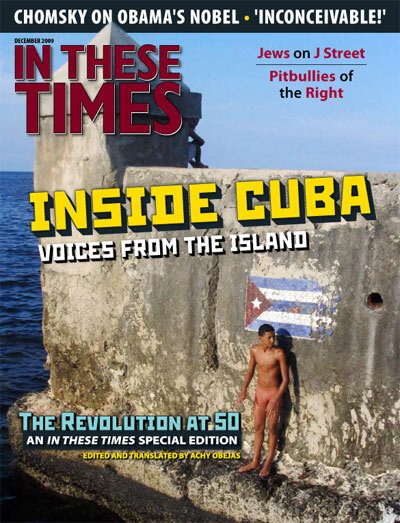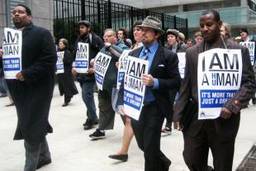
Champions of turf fields rave about their vivid green hue, easy maintenance, longevity and year-round availability. All of which has left old-fashioned grass virtually scoreless in the “real versus fake” debate. But underneath turf’s bright exterior lies a potential health threat that has led both state and federal government organizations, including the Environmental Protection Agency, to take a second look at the seemingly perfect surface.
Turf derives a semblance of dirt from recycled tire bits. Dubbed “crumb rubber,” the material keeps the artificial blades of grass standing upright, while adding cushioning and allowing rain water to drain.
But while praised for their shock absorption ability, used tire crumbs contain harmful contaminants such as lead, mercury and benzene, often in unregulated amounts. As athletes play on turf fields, they kick up and then inhale these tire-dust particles. Moreover, the toxins in the crumb rubber may also contribute to ground water pollution. The layer of tire crumb infill can harbor bacteria, leading to infections (including staph). Crumb rubber also absorbs heat at a higher rate than natural grass, thereby contributing to heat-related injuries and conditions like burns, dehydration and exhaustion.
Lingering questions
Despite these potential health threats and rising concerns from its own scientists on the environmental and health effects of crumb rubber infill, the EPA has yet to issue a single report on the potential adverse effects of using crumbled tire particles to build artificial fields. Advocacy groups such as Public Employees for Environmental Responsibility (PEER) have criticized the agency for not only endorsing something it has not thoroughly examined, but for misleading the public into thinking it was handling the situation.
This isn’t the only time that artificial turf has come under fire. In April 2008, the New Jersey Department of Health and Senior Services discovered lead dust in the pigment that gives turf its color in artificial fields in Hoboken and Newark. The U.S. Consumer Product Safety Commission responded with a limited study, ultimately maintaining that the lead present posed no health threat.
But while the grass fibers themselves may be harmless, the lead inquiry helped spark a turf controversy that only seems to grow with the material’s rising use around the country. During the past year, concern has shifted from the grass fibers to tire crumbs.
In fall 2008, amid concern from politicians and anxious consumers, the EPA called into question its earlier endorsement of the recycled tire used to cushion playgrounds and athletic fields, and announced that the agency would conduct a limited test of turf fields to see if a full study was necessary. EPA spokesman Dale Kemery previewed results in The Philadelphia Inquirer on June 30, indicating that “the raw data shows there is no inhalation danger to children who play on various types of artificial fields and play surfaces.” Kemery also stated that while the data so far indicates minimal risk, the results are still being processed.
In July, PEER, the group of whistle-blowing environmentalists, filed a Freedom of Information Act request for the EPA’s findings. In response, EPA official Eric Wachter replied in a September letter that the agency was merely checking to see if a more in-depth study was necessary. This led PEER to accuse the agency of stalling.
Further investigation by PEER found that concern with artificial turf dates back to January 2008, when the EPA’s Denver office warned agency headquarters of the hazards of recycled tires, saying that the material may contain harmful heavy metals such as arsenic, mercury and cadmium. Denver officials even recommended the EPA take a neutral stance instead of backing the use of recycled tires for play areas. Nonetheless, the EPA has not pulled its endorsement of fields and playgrounds that use tire crumbs, and is instead waiting to determine if more study is needed.
It remains to be seen whether the results of the EPA study will correspond with studies by governments in New Jersey, Connecticut, New York and, most recently, California, all of which have found turf poses little to no health risk. However, in August, synthetic turf industry powerhouse AstroTurf settled a lawsuit filed by California Attorney General Jerry Brown in 2008 by agreeing to reduce the amount of lead in its product from 5000 parts per million to 50 by June 2010. AstroTurf will also pay $170,000 in fees and civil penalties under the settlement, in addition to funding a $60,000 grant to California’s Public Health Trust for the testing of existing artificial turf fields across the state.
Another event contributing to the ongoing concerns surrounding turf occurred in Tacoma, Wash. In December 2008, high-school soccer player Luke Beardemphl put a college soccer career on hold after being diagnosed with Hodgkin’s lymphoma. When his parents discovered that eight other soccer players in Tacoma had been diagnosed with various forms of cancer, it added to their belief that turf may be carcinogenic.
If the EPA study finds that tire crumble is in fact dangerous, it would affect both the recycling industry and those who shell out big bucks for artificial turf fields. Each year in the United States roughly 242 million tires are thrown away, according to the EPA. And the cost of a turf field? Between $500,000 to $1 million, says the Synthetic Turf Council.
Despite their safety claims, companies changing products
Despite the AstroTurf lawsuit settlement, the turf industry is standing by its product. Citing a New York Department of Health and Mental Hygiene report that says toxic chemicals present in crumb rubber are typical in urban environments, G9 Synthetic Turf states that reports of turf’s toxicity are generally based on “extreme laboratory testing” that “rarely replicates actual field conditions.”
At the same time, however, turf companies are beginning to adopt safer manufacturing practices. Park officials in New York City have pledged to no longer use tire crumbs in their artificial turf fields, and some turf companies are adopting lead levels that conform to the standards laid out for lead content in toys.
An example of a safer alternative to crumb rubber is known as FlexSand Action, a sand-based product that doesn’t stick to people and is likely more environmentally-friendly than traditional crumb rubber, while still maintaining all its benefits.
That’s good news for athletes like Michelle Cilenti, a 21-year-old club field hockey player at the University of Maryland who says she has never heard about crumb rubber’s possible hazards. Cilenti has long been concerned by how rubber particles seem to follow her everywhere – from the field to her apartment to the washer – even occasionally into her eye.
“Even though it’s apparently hazardous, the benefits of a smooth game heavily outweigh the cons,” she says. “Grass can cause the ball to pop up in unexpected directions which is both dangerous and extremely difficult to play with.”
According to its website, AstroTurf is dedicated to “protecting the environment, your investment, and most importantly, your players.” That may be true, but turf critics and the industry alike await the EPA’s full report, which had still not been released by early November.







